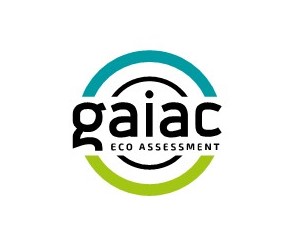How much life is in our soils? Research consortium investigates biodiversity in Germany's soils


Federal Environment Minister Carsten Schneider emphasized that the great diversity of species is what makes soil what it is: a vital foundation for us humans and our environment. He went on to explain that healthy and living soils are true all-rounders, as they not only provide the basis for our food, but also act as water reservoirs, even in extreme drought or flooding, and store large amounts of carbon, which helps in the fight against climate change.
The president of the German Environment Agency (UBA), Prof. Dirk Messner, explained that soil organisms help us mitigate the effects of climate change and increase soil fertility. This is an invaluable service when you consider that 90 percent of our food is grown on soil. Therefore, pollutant inputs, soil exploitation, droughts, and soil erosion are all the more harmful because they severely impair soil biodiversity and are associated with soil loss.

Until now, the world of soil organisms has often remained hidden, even though it is essential for humans. If the soil is healthy, soil animals and microorganisms are active. They control nutrient cycles, store carbon in soils, mix the soil layers and help to store rainwater. This is where 'ecosystem engineers' such as earthworms are at work.
However, numerous harmful effects such as soil pollution, unsustainable land use and climate change are impacting soil biodiversity. In order to better understand the consequences and counteract them, the research project is now investigating the typical composition of biotic communities in Germany's soils. The aim of the "Basic Survey on Soil Biodiversity", which is being implemented as part of the Natural Climate Protection Action Program, is to define good biological soil conditions and identify deviations with serious consequences. Together with earthworms, springtails, mites, nematodes, fungi and bacteria, influencing factors are also recorded. In contrast to the extensive knowledge of aquatic ecosystems, for example, there has been a complete lack of indicators for assessing the biological condition of soil and its changes over time.

"The joint project work on the »Basic Survey on Soil Biodiversity« over the next few years is a unique opportunity to systematically and comprehensively investigate biodiversity in soils," says Prof. Christoph Schäfers, Director of the Fraunhofer Institute for Molecular Biology and Applied Ecology IME. "The results will provide decisive answers to the urgent question of how biodiversity in soils can be better protected and their benefits for humans preserved."
Over the next six years, experts in the field of soil ecology from all over Germany will investigate biodiversity in different soils under different uses. As the diversity of organisms in soils is extraordinarily high - trillions of bacteria and several thousand representatives of different groups can live in one gram of soil - recording them will be a particular scientific challenge. The latest molecular biology methods are also being used to overcome this challenge and make it easier to identify soil animals and microorganisms in the future.
The project team will work closely with various research institutions in order to incorporate ongoing activities. In addition to the UBA, these include the Federal Agency for Nature Conservation, the National Biodiversity Monitoring Center, the Thünen Institute, the Julius Kühn Institute and the National Soil Monitoring Center.












| Work package 1: Coordination |
|
| Dr. Elke Eilebrecht | elke.eilebrecht[at]ime.fraunhofer.de |
| Dr. Karsten Schlich | karsten.schlich[at]ime.fraunhofer.de |
| Work package 2: Concept | |
| Carsten Haub | carsten.haub[at]eftas.com |
| Work package 3: Region selection | |
| Carolin Kaufmann-Boll | c.kaufmann-boll[at]ahu.de |
| Work package 4: Accompanying parameters | |
| Karlheinz Weinfurtner | Karlheinz.Weinfurtner[at]ime.fraunhofer.de |
| Work packages 5: Fauna (morphological) | |
| Prof. Dr. Peter Ebke | ebke[at]mesocosm.de |
| Work package 6: Microorganisms | |
| Dr. Cecilia Diaz Navarrete | cecilia.andrea.diaz.navarrete[at]ime.fraunhofer.de |
| Work package 7: Fauna (eDNA) |
|
| Dr. Ina Schäfer | ina.schaefer[at]senckenberg.de |
| Work package 8: Data management | |
| Prof. Dr. Martina Roß-Nickoll |
ross[at]bio5.rwth-aachen.de |
| Dr. Alexander Bach |
alexander.bach[at]bio5.rwth-aachen.de |
| Work package 9: Data analysis | |
| Dr. Andreas Toschki |
Toschki[at]gaiac-eco.de |
| Work package 10: Decisive measures | |
| Dr. Christian Ristok |
christian.ristok[at]idiv.de |